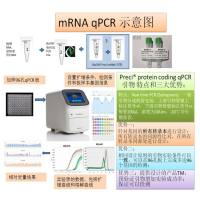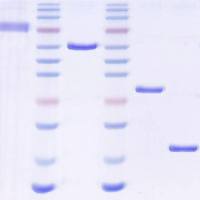Stroke is a major cause of disability in the United States affecting approximately 500,000 people per year at a rate of one person every minute. Stroke induces a decrease in ATP, an increase in the expression of immediate early genes, and causes oxidative damage to DNA, RNA, protein and lipid. One determinant of recovery is the ability of the affected brain cells to repair themselves. Very little is known about oxidative damage to DNA and RNA in the brain. Tissue culture studies indicate that the presence of oxidative lesions in DNA and RNA can terminate or change coding properties during translation, transcription, and replication. The molecular lesions can be detected using gas chromatography/mass spectrometry (1 –5 ), high-pressure liquid chromatography with electrochemical detection or with salicylate treatment (5 –11 ), and immunohistochemistry (12 –17 ). Recently, a nucleic acid probe has been generated that binds to an abnormal guanine base, 8-hydroxyguanine (oh8G) (Fig. 1 ) (18 ). In addition, nucleic acids without a base (apurinic/apyrimidinic sites, AP sites) can be detected using a biotin-containing aldehyde-reactive probe (19 ,20 ). AP sites are generated by a breakage in the glycosylic bond between the base and ribose. Other types of DNA/RNA lesions are DNA singlestranded breaks (SSBs), which involve the breakage of bonds that create a phosphate terminus (3′-PO4 : with a phosphomonoester bond to 3′-ribose, Fig. 1 ), or a 3′-phosphoglycolate terminus (3′-PG, a breakage on the ribose/deoxyribose, Fig. 1 ). Some of these lesions can also be detected by the inability of the DNA to serve as a template for polymerase chain reaction (21 ,22 ). Several laboratories have detected modified bases in the brain after brain injury (5 ,16 ,23 ,24 ). However, with the exception of immunohistochemical assays using antibodies, none of these assays definitively locate the lesions in the tissue. In addition, monoclonal antibodies used in immunohistochemical assays do not distinguish oxidative lesions in DNA from those in RNA. To study the effect of DNA lesions in the brain, we have developed in situ assays for the detection of oxidative DNA lesions in the brain.






